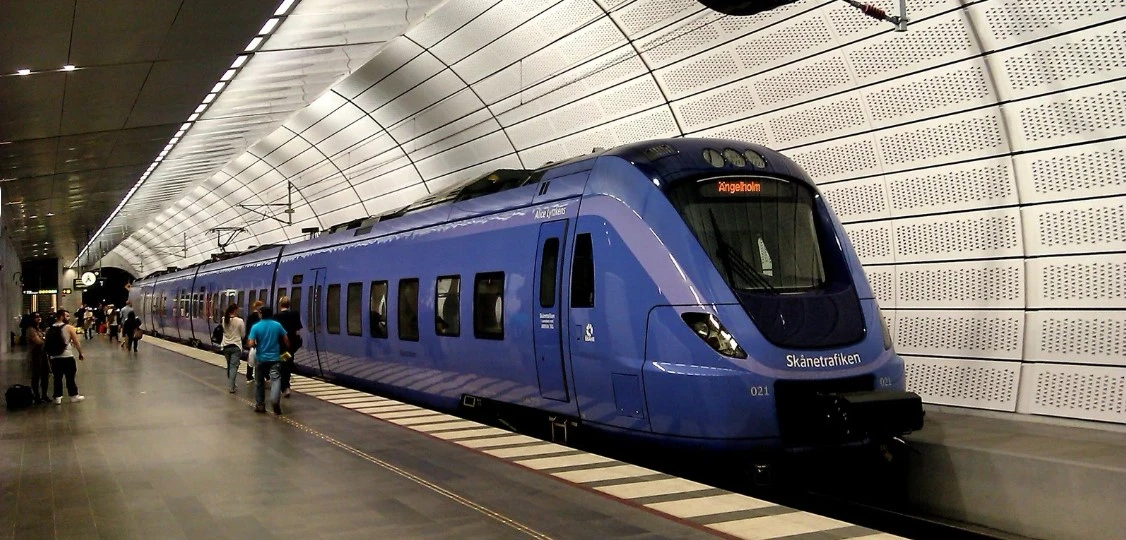Sweden is cementing its position as a global pioneer in public transportation through a suite of bold innovations that combine environmental ambition, digital infrastructure, and collaborative governance. From fossil-free bus fleets to autonomous shuttles and energy-efficient ferries, the Scandinavian nation is redefining what modern mobility looks like in the 21st century.
Fossil-Free Fleets on the Fast Track to Net-Zero
In a remarkable feat of environmental engineering and policy alignment, nearly 100% of Sweden’s public buses are now fossil-free. While approximately 10% are fully electric, the majority run on biodiesel alternatives like HVO100. This transition plays a pivotal role in supporting Sweden’s national target of achieving net-zero emissions by 2045.
The achievement is the result of tight coordination between local authorities and transport operators, with procurement policies explicitly tied to climate objectives.
Driverless Future: Autonomous Transit in Action
Sweden’s commitment to smart mobility is underscored by its upcoming launch of a Level 4 autonomous bus service in Gothenburg this August. The Karsan Autonomous e-ATAK will operate without a human driver, navigating key routes with the help of advanced sensors and AI — rain or shine.
In Stockholm, self-driving minibuses have already moved beyond pilot stages into commercial service in the suburb of Barkarby, highlighting the technology’s rapid scalability and cost-saving potential.
Charging Ahead with Wireless Technology
On Stockholm’s bus line 755, Sweden debuted Scandinavia’s first hybrid bus line using wireless charging. At each terminus, buses receive a quick seven-minute charge — enough to travel another 10 kilometers — dramatically cutting emissions and noise pollution.
The same wireless charging principles are now being piloted for urban taxis and other electric vehicles, nudging Sweden closer to its vision of a fully electrified transport ecosystem.
Seamless Mobility Through Sharing
To reduce dependency on private vehicles, Stockholm is integrating bike- and car-sharing services with its core public transport network. This regional shared mobility platform serves as a feeder to high-capacity transit lines, creating a smooth, multimodal travel experience for commuters.
High-Speed on the Water: Electric Ferries Take Flight
Public transport isn’t limited to roads. Sweden is bringing innovation to its waterways with the Candela P-12 Shuttle — the world’s fastest and most energy-efficient electric ferry. This hydrofoil vessel glides above the water, reducing drag and energy use while delivering swift, silent commutes across Stockholm’s archipelago. The initiative is part of a broader effort to phase out diesel-powered water transport.
Collaborative Governance: A Blueprint for Innovation
Sweden’s success in public transport transformation owes much to its collaborative policy model. The Public Transport Agreement Committee unites government bodies, industry stakeholders, and municipalities to establish widely adopted standards for tenders, environmental benchmarks, and vehicle specifications — turning lofty climate goals into executable policy.
Smarter Systems for a Smarter Commute
Across Swedish cities, demand-responsive transit systems and mobility hubs are being tested to optimize service delivery. These include flexible bus routes governed by real-time demand, as well as integrated hubs for both passenger and goods movement. These digital solutions prioritize user convenience, system efficiency, and environmental performance.
Summary of Key Innovations in Swedish Public Transport
| Innovation Area | Example/Project | Impact |
|---|---|---|
| Electrification | Fossil-free bus fleet | Nearly 100% fossil-free, lower emissions |
| Autonomous Transit | Karsan e-ATAK, self-driving minibuses | Driverless, efficient, scalable operations |
| Wireless Charging | Line 755 hybrid bus, taxi pilots | Efficient, silent, emission-free charging |
| Shared Mobility | Stockholm regional network | Multimodal, accessible, reduced car use |
| Water Transport | Candela P-12 electric ferry | Fast, energy-efficient, replaces diesel |
| Policy Collaboration | Public Transport Agreement Committee | Aligns industry with climate targets |
| Digital Solutions | Demand-responsive buses, mobility hubs | Flexible, user-centric, efficient travel |
Sweden’s public transport model shows how visionary policy, cutting-edge tech, and public-private cooperation can deliver a cleaner, smarter future — one that other nations may soon look to emulate.

